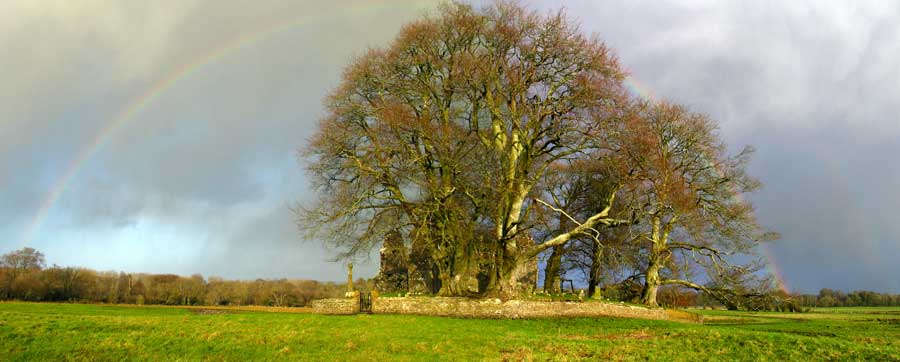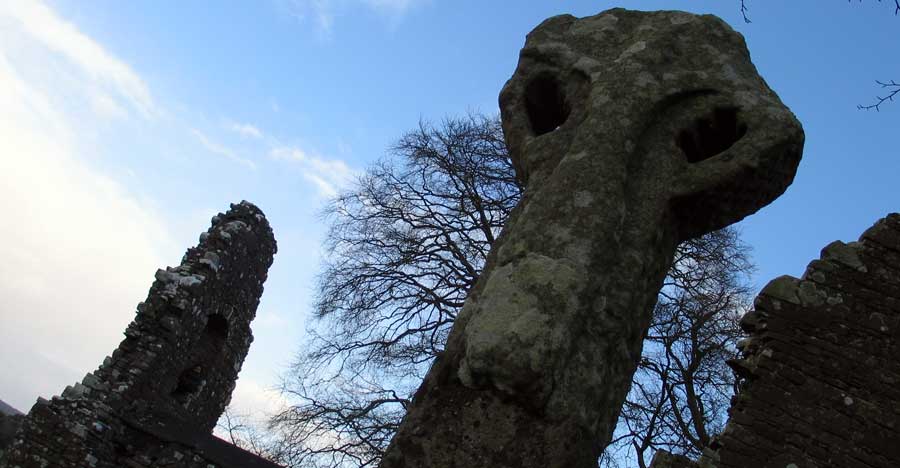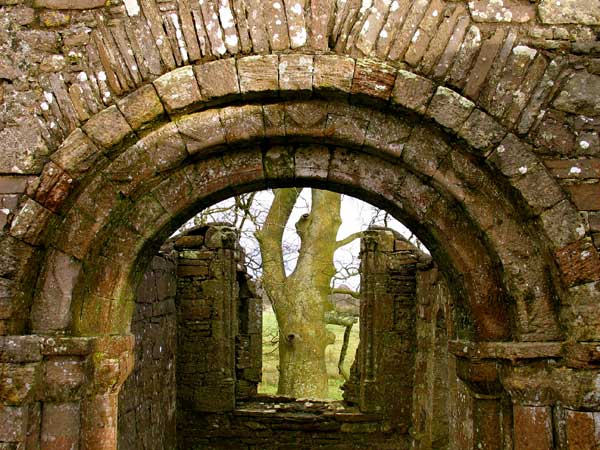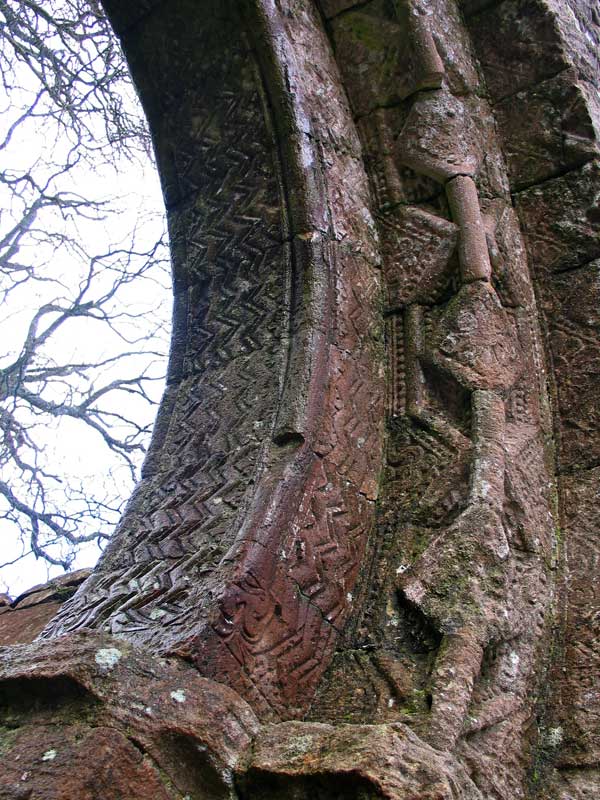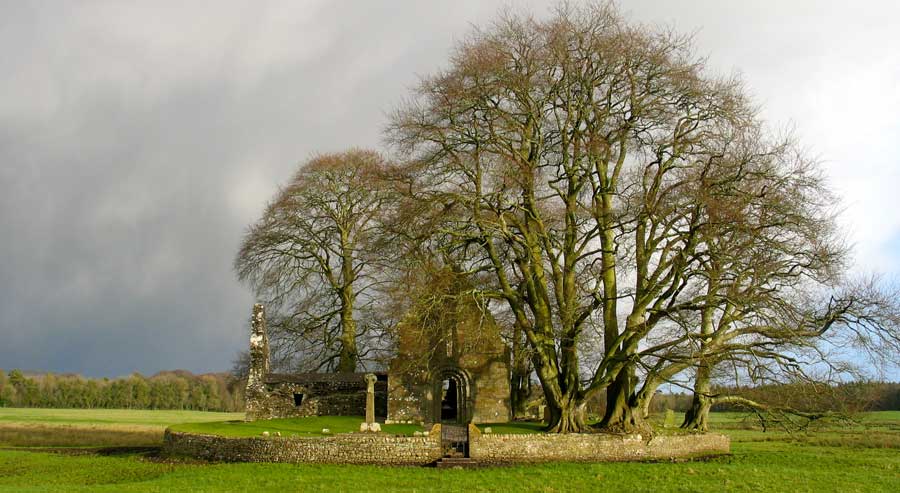Monaincha
Monaincha means 'the Island in the Bog', and was the retreat house of several leading saints including Cronan of nearby Roscrea.
Monaincha, the Island of the Living, is an eight century monastic site near the larger St Cronan's monastery at Roscrea in County Tipperary. Monaincha, a tiny island, was surrounded by bog and wetlands until land improvements in the 1820s drained the area. The island was the focus of a famous pilgrimage in medieval times, in the 10th century it was known as the 31st wonder of the world. The monastery is said to have been founded by St Cannice who lived around 600 AD.
It stood in a lake or bog until about 1790, and was one of the most famous pilgrimage sites in Ireland in its day. In the Book of Ballymote Monaincha was listed as the Thirty Third Wonder of the World. It was known as Inish na mBeo, the Island of the Living. The western doorway and inner chancel arch of the 12th century church are richly carved and a weathered high cross stands outside the door. The church is almost certainly the replica of a fabulous wooden original.
Harold Leask thought it virtually unique:
'No other church ruin in Ireland is so attractive in site completeness, interesting detail an appearance as that of Monaincha'.
The lake was drained in the 1790's and the islands became dry! However it is almost 200 years since Monaincha became dry. It is still known as the Holy Island.
Three km east of Roscrea stands the now dry lands of Móin na hInse, the island in the bog, where the saints of the surrounding monasteries went on retreat and which later became the hermitage site of the reforming Culdees or Cúil Dé, and later still developed as one of Irelands leading medieval pilgrimage sites.
Inis locha Cré or Insula Loch Cré were the early names. Both mean the same: the bog island of Cré. To here the local saints, Cronan of ros Cré, Molua of Kyle, and Canice of Aghaboe retreated. It features prominently in all their lives.
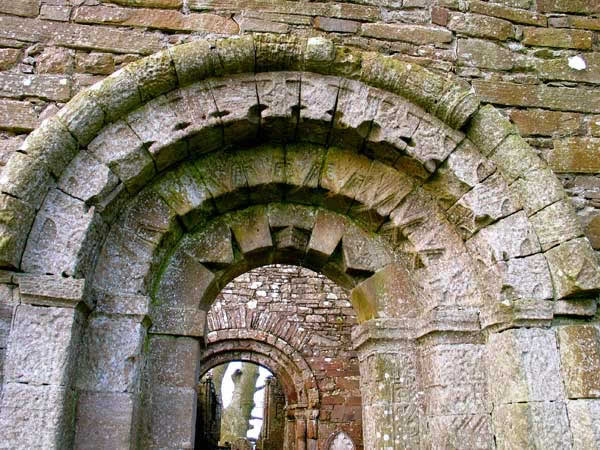
The stonework in the church is simply fabulous. A triple sandstone arch, much weathered, and the jambs of the entrance are richly carved.This place derived an early degree of celebrity from a very ancient abbey founded about the 7th century for Culdean monks, on an island in the parish, called Mona Incha, and dedicated to St. Columba.
This island, which comprised little more than two acres of firm ground encompassed by a soft morass, recently drained by its proprietor and brought into cultivation, is noticed by Giraldus Cambrensis, who came into Ireland as preceptor of John, Earl of Morton, afterwards King of England, who says that there a few Culdees or Colidei 'did devoutly serve God.' An opinion even in his time prevailed that no person, however severe might be his malady, could die in this island, from which tradition it obtained the appellation of Insula Viventium, or 'the Isle of the Living.'

This legendary celebrity made it the resort of numerous pilgrims from the remotest parts of the country, but did not prevent the brethren from emigrating to the more healthy shores of the neighbouring village of Corbally, where they fixed their residence, and where there are still the remains of a small neat cruciform chapel, with narrow lancet-shaped windows.

